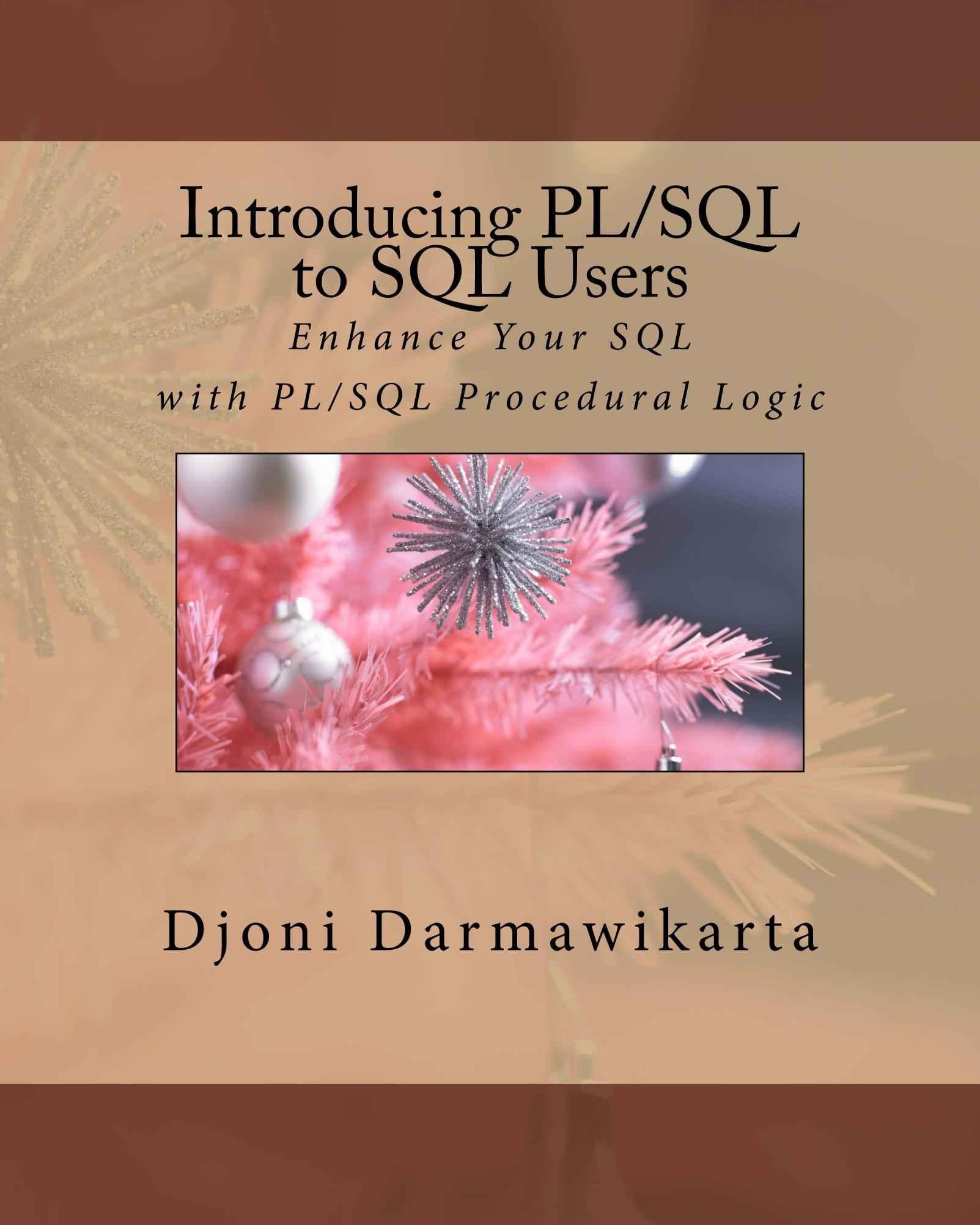Introducing PL/SQL to SQL Users

Author:Djoni Darmawikarta
Language: eng
Format: mobi
Published: 2015-12-13T22:00:00+00:00
Other data types frequently used are: INT (for storing integer), CHAR (for fixed length character string), VARCHAR2 (for variable length string), and DATE.
In the following example, we also declare reduced_price variable.
Its data type is the same as that of the price_avg.
In the Executable part, reduced_price is assigned the result of price_avg * 0.05.
We use the := operator (colon equal-sign) to assign a variable on its left with the value on its right, as in the example.
DECLARE
price_avg NUMBER(6,2);
reduced_price price_avg%type;
BEGIN
UPDATE prod SET unit_price = unit_price + 1 WHERE unit_price < 2;
SELECT AVG (unit_price) INTO price_avg FROM prod ;
dbms_output.put_line (price_avg);
IF price_avg > 1.5 THEN
ROLLBACK;
reduced_price := price_avg * 0.05;
UPDATE prod SET unit_price = reduced_price + 1 WHERE unit_price < 2;
ELSE
COMMIT;
END IF;
END;
Download
This site does not store any files on its server. We only index and link to content provided by other sites. Please contact the content providers to delete copyright contents if any and email us, we'll remove relevant links or contents immediately.
Algorithms of the Intelligent Web by Haralambos Marmanis;Dmitry Babenko(15991)
Azure Data and AI Architect Handbook by Olivier Mertens & Breght Van Baelen(7672)
Building Statistical Models in Python by Huy Hoang Nguyen & Paul N Adams & Stuart J Miller(7652)
Serverless Machine Learning with Amazon Redshift ML by Debu Panda & Phil Bates & Bhanu Pittampally & Sumeet Joshi(7527)
Data Wrangling on AWS by Navnit Shukla | Sankar M | Sam Palani(7290)
Driving Data Quality with Data Contracts by Andrew Jones(7285)
Machine Learning Model Serving Patterns and Best Practices by Md Johirul Islam(7025)
Learning SQL by Alan Beaulieu(6231)
Weapons of Math Destruction by Cathy O'Neil(6199)
Big Data Analysis with Python by Ivan Marin(5926)
Data Engineering with dbt by Roberto Zagni(4928)
Solidity Programming Essentials by Ritesh Modi(4558)
Time Series Analysis with Python Cookbook by Tarek A. Atwan(4395)
Pandas Cookbook by Theodore Petrou(4086)
Blockchain Basics by Daniel Drescher(3527)
Natural Language Processing with Java Cookbook by Richard M. Reese(3140)
Hands-On Machine Learning for Algorithmic Trading by Stefan Jansen(3039)
Learn T-SQL Querying by Pam Lahoud & Pedro Lopes(2928)
Feature Store for Machine Learning by Jayanth Kumar M J(2920)
